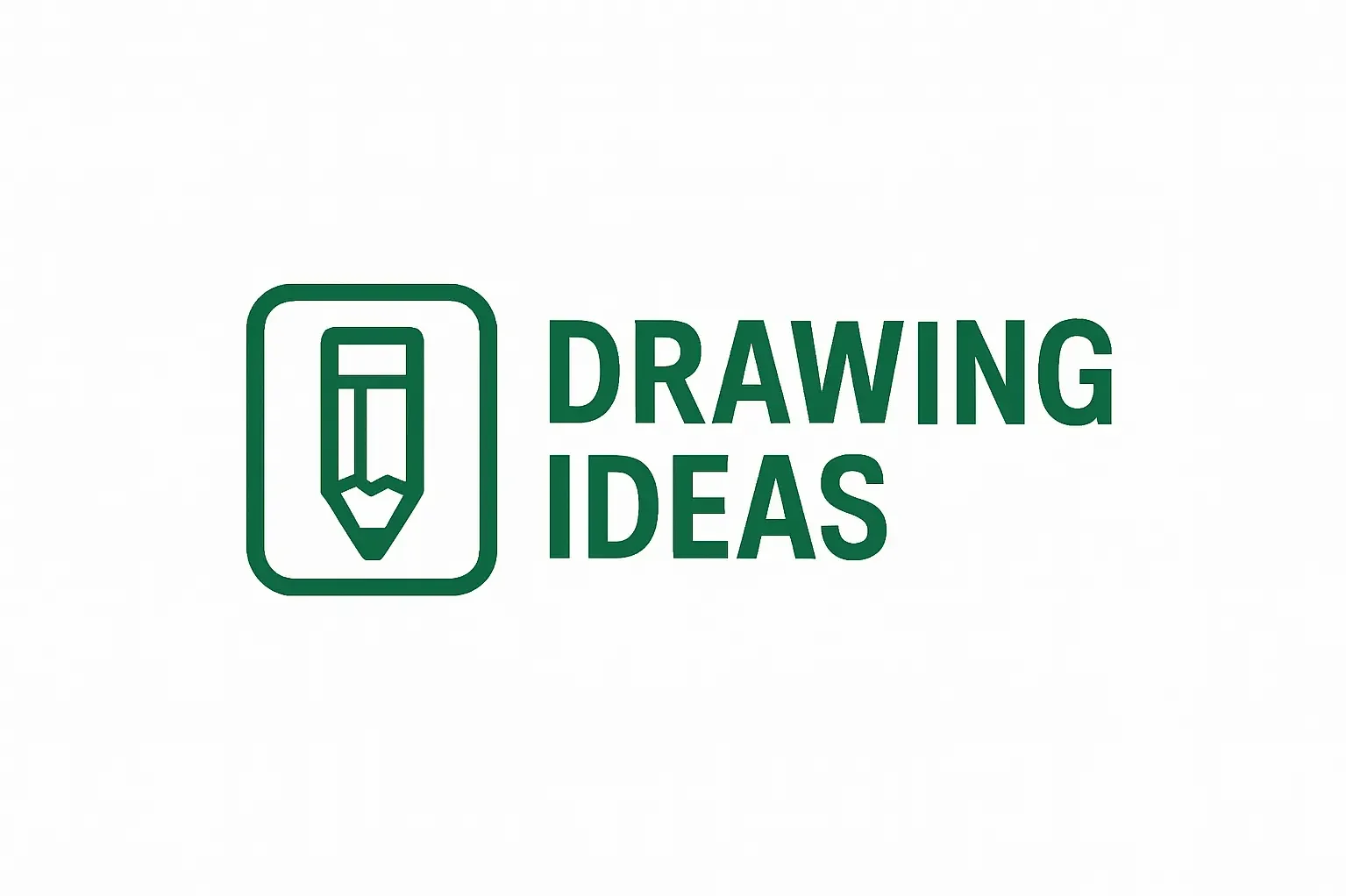Drawing Ideas
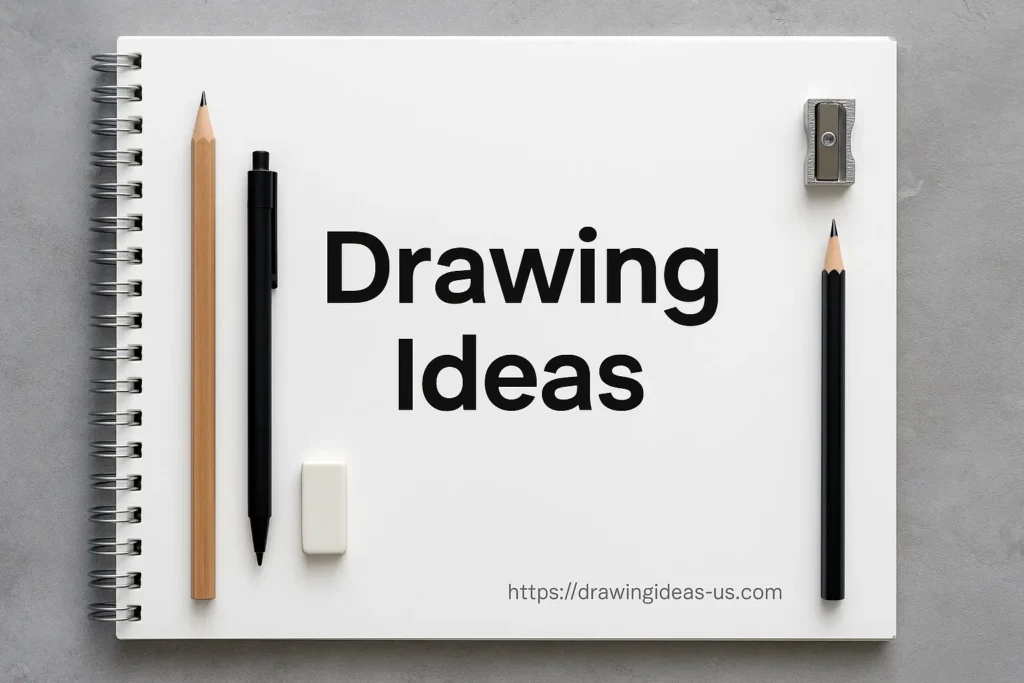
Whether you’re a fledgling picking up a pencil for the to begin with time or a prepared maker looking for new motivation, drawing remains one of the most open and expressive craftsmanship shapes. It’s a important way to share contemplations, investigate creative ability, and loosen up mentally.
The charm of drawing lies in its simplicity—just a few essential materials and a start of inventiveness are sufficient to start your travel. No favor hardware is required, as it were your thoughts and the eagerness to try.
In this total direct, we’ll investigate a wide extend of drawing prompts suited for all capacities. From speedy portrays to more complex topics, you’ll find incalculable ways to bring your creative vision to life on paper.
Why Drawing Is Good for Everyone
Sketching isn’t limited to skilled artists—it’s a fulfilling activity for anyone who wants to communicate visually or explore their imagination. Here are some key advantages:
- Strengthens Concentration: Focusing on shapes, lines, and textures cultivates sharper awareness and deeper mindfulness.
- Develops Coordination: Frequent practice enhances fine motor control and visual-motor integration.
- Fosters Expression: Art allows you to channel thoughts and feelings without relying on words.
Whether you’re sketching casually, experimenting with new styles, or using it for personal growth, drawing can positively influence mental, emotional, and cognitive well-being.
Getting Started: What You Need
Before diving into creative ideas, it’s important to assemble your drawing essentials. The great news? You don’t need expensive or complex supplies to begin.
Basic Materials:
- Pencils (HB for outlines, softer grades like 2B or 4B for shading and depth)
- Erasers (standard rubber or kneaded versions for soft corrections)
- Sketchbook or loose drawing sheets
- Black ink pens or fine liners for bold lines and final touches
- Sharpener to maintain crisp pencil tips
Optional Enhancements:
- Colored pencils or felt-tip markers for vibrant effects
- Ruler and compass for clean lines and geometric shapes
Begin with the basics and gradually expand your toolkit as your confidence and technique evolve. Simplicity can produce stunning results when paired with creativity and practice.
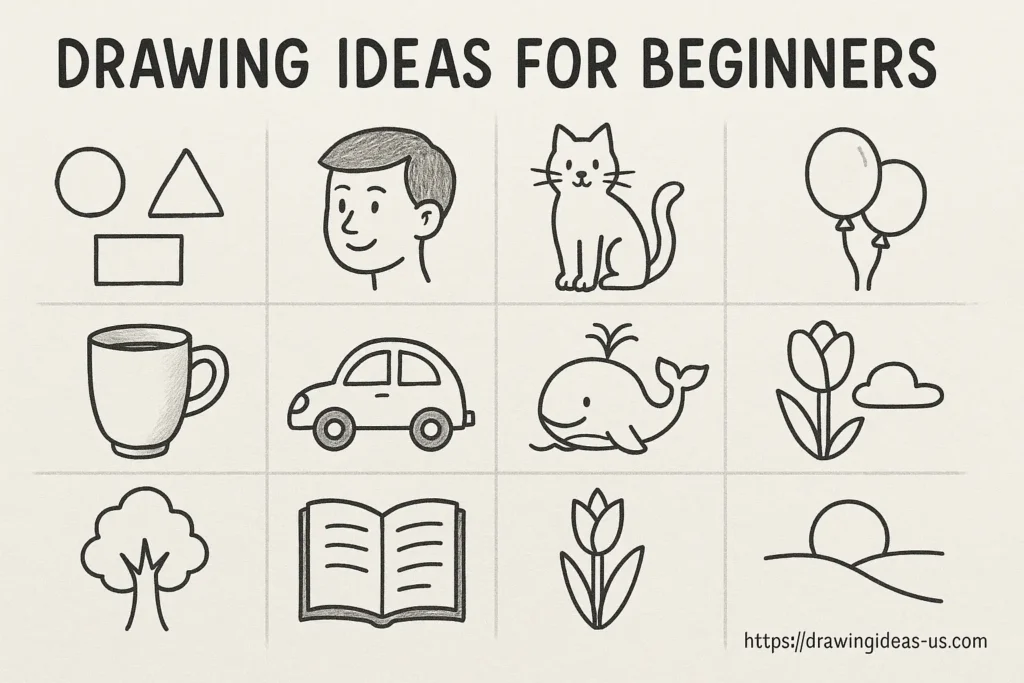
Drawing Ideas for Beginners
If you’re just starting out, don’t worry about creating a masterpiece. Here are some easy drawing ideas:
1. Everyday Objects
Look around you and pick simple items to sketch. Great starter ideas include:
- A cup or mug
- Your keys
- A shoe
- A lamp
- A book
2. Nature Elements
Nature is full of simple shapes and textures:
- Leaves
- Flowers
- Pebbles
- Clouds
- Trees
3. Basic Shapes Turned Art
Draw circles, squares, and triangles. Then turn them into characters or objects:
- A circle becomes a face
- A triangle becomes a tree
- A square becomes a building
4. Fruit and Vegetables
Practice with foods like:
- Apples
- Bananas
- Carrots
- Tomatoes
These are great for practicing contours and light shading.
Drawing Ideas for Intermediate Artists
Once you’re confident with basic lines and shading, move on to more challenging and creative prompts:
1. Faces and Expressions
Try drawing different expressions:
- Happy
- Angry
- Sad
- Surprised
Work from your imagination or a mirror. Focus on eyes, eyebrows, and mouth shapes.
2. Animals
Try Diffrent:
- Cats
- Dogs
- Birds
- Fish
- Horses
Start with photos or simplified references.
3. Fantasy Creatures
Let your imagination run wild:
- Dragons
- Fairies
- Aliens
- Mythical beasts
Combine real animal features to invent something new.
4. Urban Scenes
Practice drawing:
- Street corners
- Windows and doorways
- Bikes
- Park benches
- Shops and market stalls
Pay attention to perspective and proportions.
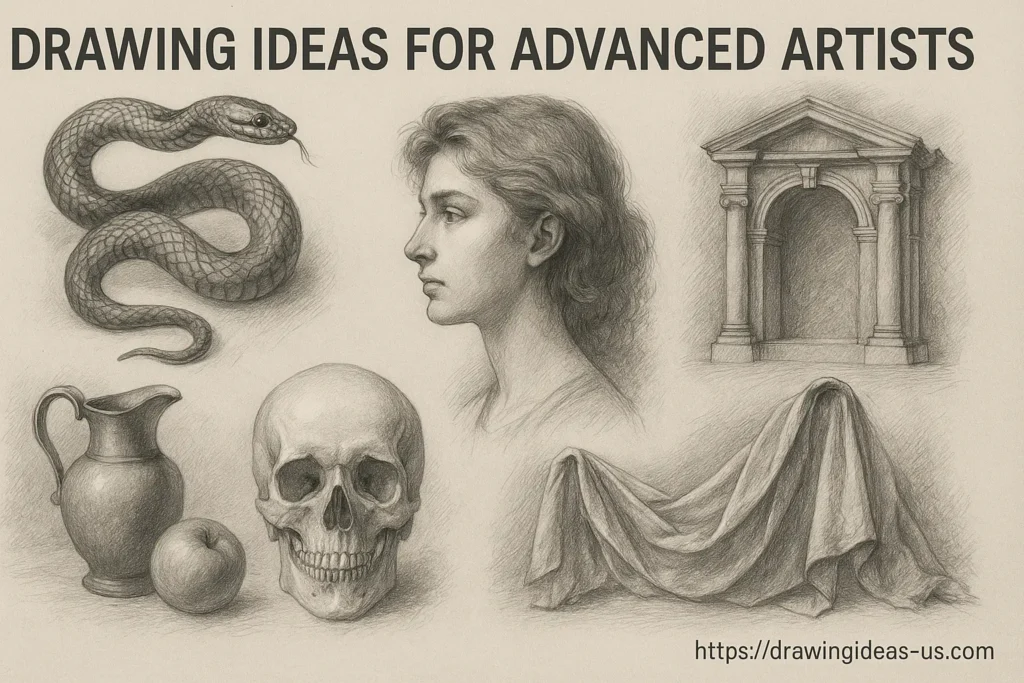
Drawing Ideas for Advanced Artists
If you’re looking to push yourself further, try complex compositions and storytelling through your drawings:
1. Full Scenes
Create a full environment:
- A room interior
- A forest path
- A busy street
- A sunset beach
Think about foreground, background, and lighting.
2. Portraits
Practice drawing realistic faces with detail:
- Study anatomy
- Work on shading and texture
- Focus on eyes, nose, and lips
Portraits require patience and precision.
3. Hands and Feet
Often considered tricky, hands and feet are great subjects for anatomy study and improving proportions.
4. Illustrative Series
Tell a short story through several drawings:
- A character waking up
- Going on a journey
- Facing a challenge
- Reaching a resolution
This develops consistency and visual storytelling.
Seasonal Drawing Ideas
Tie your drawing themes to the seasons for timely inspiration:
Spring
- Blossoming flowers
- Baby animals
- Rainy scenes
- Butterflies
Summer
- Beaches
- Ice cream
- Sunglasses
- Palm trees
Autumn
- Falling leaves
- Pumpkins
- Cozy clothes
- Campfires
Winter
- Snowy landscapes
- Hot drinks
- Mittens and scarves
- Holiday scenes
30-Day Drawing Challenge Ideas
Require a fun way to remain propelled? Attempt a 30-day drawing challenge. Here’s a proposed provoke list:
- Your favorite animal
- A self-portrait
- A cozy room
- Your favorite food
- Something from your childhood
- A daydream creature
- A tree
- A clock
- A container of coffee
- A vehicle
- A match of shoes
- A melodic instrument
- An insect
- A house from your dreams
- A plant
- A character from your imagination
- Something underwater
- A cityscape
- A hat
- A combine of hands
- Something that flies
- A legendary creature
- A night scene
- A mountain range
- A waterfall
- Your pet or dream pet
- A garden
- A planet
- An ancient building
- A astonish blessing box
Drawing Styles to Try
Testing with distinctive drawing styles can offer help you discover what resounds with you inventively.
Realism
Emphasizes correct and comparable representations, requiring cautious recognition of lighting, shadows, degrees, and surface details.
Cartoon
features distorted and exaggerated shapes that serve as the culmination of visual description, humor, and character design that is expressive.
Abstract
Focuses on creative courses of activity of lines, shapes, and shapes without taking after to down to earth degrees or perspectives.
Minimalist
Relies on clean, fundamental follows and uncluttered compositions, capturing the center thought with outstandingly few elements.
Doodle Art
Involves casual, unconstrained depicts that energize loosening up and innovative adaptability without the weight of precision.
Exploring these diverse methodologies will offer help you develop your inventive point of see and make your extraordinary mold.
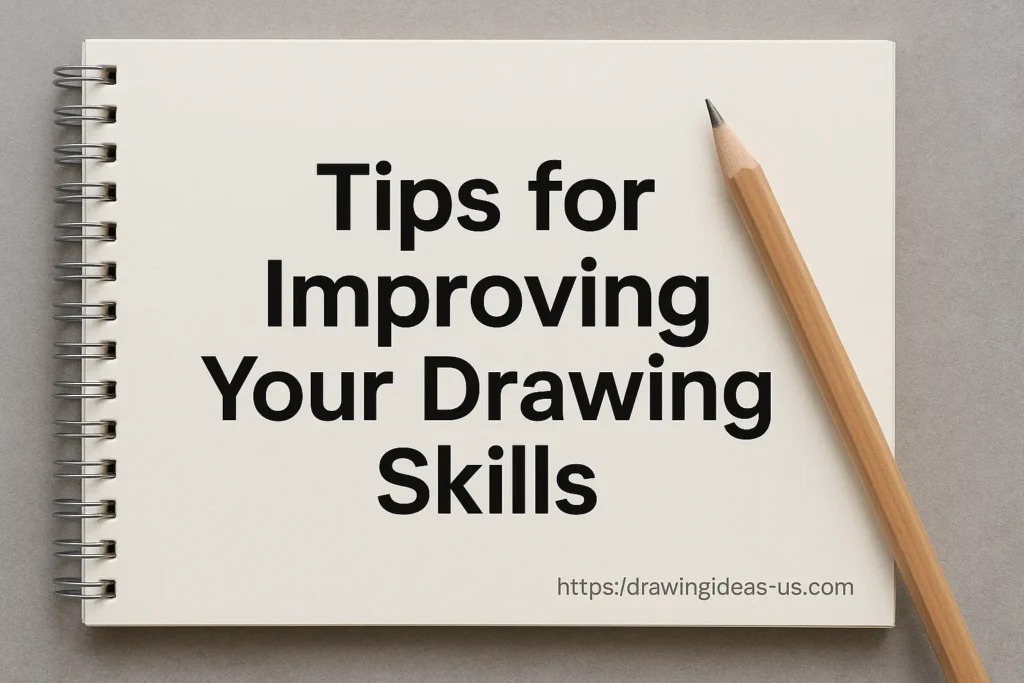
Tips for Improving Your Drawing Ideas Skills
Development in drawing takes time, devotion, and unfaltering hone. Here are a few viable suggestions:
- Draw Every day: 10–15 minutes.
- Use Visual References: Considering real-life things or pictures progresses accuracy and form.
- Try Modern Things: Investigate a assortment of devices, surfaces, and creative methods.
- Practice Persistence: Advance things more than perfection—allow space for mistakes.
- Engage with Others: Interface with individual craftsmen, trade criticism, and learn collaboratively.
- Maintain an Thought Diary: Note down imaginative contemplations at whatever point they emerge.
Drawing from Imagination vs. Reference
Each approach offers profitable benefits:
Drawing from reference hones visual mindfulness, reinforces exactness, and upgrades specialized aptitudes. It permits you to think about real-world extents, lighting, and form.
Drawing from creative energy powers innovativeness, empowers inventiveness, and makes a difference develop your individual imaginative voice.
Mixing both techniques makes a well-rounded foundation. Utilize references to learn structure, at that point apply your imaginative capacity to reinterpret, modify, or plan cutting edge concepts. This combination builds certainty, develops creative versatility, and fortifies your capacity to bring considerations to life—whether grounded in reality or born from faultless wander off in fantasy land.
Creating Your Own Drawing Prompts
Frequently, the most capable motivation rises from inside. Making your possess drawing prompts can touch off inventiveness and open creative energy. Attempt these strategies:
- Reflect on individual sentiments or distinctive dreams
- Merge disconnected concepts (like a feathered creature made of fire)
- Turn conventional things into inventive characters
- Set time-based challenges (such as a 10-minute concept sketch)
Designing your possess prompts sustains creativity and breaks imaginative squares. Let your internal world direct your pencil—you’ll be astounded by what you make.
Keeping a Sketchbook
A sketchbook is more than a collection of pages—it’s your imaginative journal. It serves as a individual space to investigate, envision, and advance. Preferences include:
- Monitoring your creative development
- Trying unused methods without expectations
- Cultivating interesting topics and styles
- Capturing unconstrained thoughts and visual considerations
Don’t stretch almost flawlessness—imperfection regularly leads to the most unique manifestations. Let it reflect your travel, your tests, and your advancing imagination. Utilize it frequently to open covered up potential and sustain your visual narrating aptitudes.
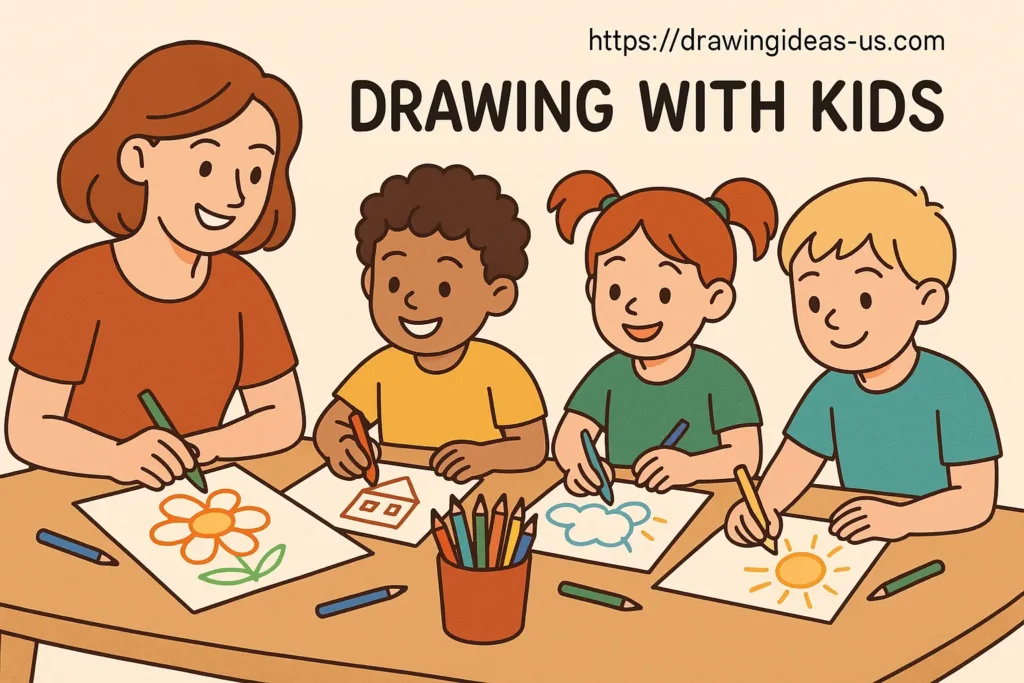
Drawing with Kids
Drawing is a brilliant interest for youthful minds. It bolsters development, creative energy, and self-esteem. Here are a few agreeable drawing thoughts for children:
- Illustrate their family members
- Invent make-believe creatures
- Design heroes or enchanted characters
- Imagine and draw their perfect house
- Create robots or clever monsters
Make the involvement lively and pressure-free. Rouse kids to test openly, grasp their imagination, and understand that errors are simply part of the learning adventure. Encourage curiosity, and let drawing become a joyful and expressive habit in their daily life..
Drawing for Relaxation and Mindfulness
Drawing can serve as a serene frame of contemplation. To grasp it for stretch relief:
- Incorporate rehashing plans (such as organized doodles)
- Draw at a moderate pace and concentrate on each movement
Avoid self-criticism—immerse yourself in the imaginative travel and savor each minute. Let the act of drawing ended up a peaceful elude that sustains calmness and clarity.
Turning Drawing into a Habit
Here’s how to make portraying a standard portion of your regular routine:
- Keep your materials inside simple reach.
- Incorporate inventive prompts to maintain a strategic distance from overthinking.
- Focus on normality instep of flawlessness.
- Acknowledge your progress.
Gradually, the hone gets to be intuitively, agreeable, and profoundly fulfilling—an enhancing imaginative custom you’ll see forward to.
Frequently Asked Questions (FAQs)
Q1: What are a few simple drawing thoughts for beginners?
A: Incredible beginner-friendly drawing thoughts incorporate ordinary objects like glasses, clears out, books, or shoes. Basic shapes and nature-inspired subjects like blooms or clouds are moreover idealize for practicing essential strategies without feeling overwhelmed.
Q2: How can I progress my drawing abilities over time?
A: Draw reliably, consider from real-life objects, investigate distinctive styles, and utilize drawing prompts. Joining inventive communities and looking for criticism can moreover quicken your improvement.
Q3: Do I require costly devices to begin drawing?
A: Not at all. A pencil, eraser, and paper are all you require to start. As your aptitudes develop, you can slowly include apparatuses like colored pencils, fine liners, or sketchbooks to investigate distinctive techniques.
Q4: How do I discover motivation when I don’t know what to draw?
A: Motivation can come from your environment, feelings, dreams, or drawing challenges. Attempt combining disconnected objects, doodling openly, or utilizing a list of day by day prompts to start inventiveness when you’re feeling stuck.
Q5: What’s the distinction between drawing from reference and imagination?
A: Drawing from reference includes utilizing real-world visuals to progress precision and strategy. Drawing from creative ability permits you to make unique thoughts without replicating. Both strategies offer assistance you develop, and a blend of the two builds a solid foundation.
Q6: Can drawing offer assistance with push or mental clarity?
A: Yes, drawing can be exceptionally calming. It advances mindfulness, decreases stretch, and makes a difference express feelings non-verbally. Numerous individuals discover that drawing for indeed a few minutes a day makes strides center and enthusiastic well-being.
Q7: What fashion of drawing ought to I begin with?
A: Attempt diverse styles—such as authenticity, cartoons, theoretical, or minimalist—and see what you appreciate most. There’s no single “correct” style.
Q8: How do I make drawing a every day habit?
A: Set aside a particular time each day, keep your supplies effectively available, and utilize fast prompts.
Final Thoughts: Your Creativity Matters
Portraying isn’t exclusively approximately making something outwardly appealing—it’s a way to pass on your internal contemplations and feelings. You don’t require to be normally talented. Imaginative capacity is created through redundancy, commitment, and enthusiasm.
Whether you’re doodling a straightforward concept, planning a refined outline, or envisioning dreamlike universes with your pencil, each stroke you make contributes to your aesthetic advancement. With time, your certainty develops, your creative energy extends, and your one of a kind fashion starts to develop. Grasp the travel, believe the prepare, and keep in mind that your inventiveness is important and boundless.
